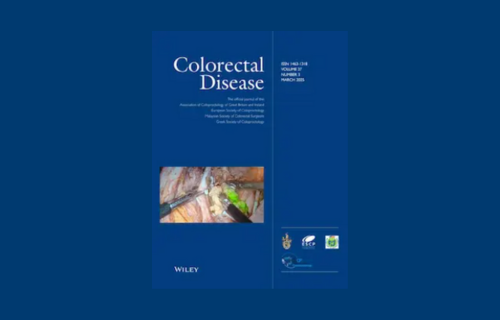Clinical validation of an AI indocyanine green fluorescence angiography expert representer
Tuesday, 22 April, 2025
Share

Congratulations to UCD School of Medicine’s Philip McEntee, Dr Patrick Boland and Professor Ronan Cahill on their recently published research in Colorectal Disease. The paper is published online open access and is titled ‘AUGUR-AIM: Clinical validation of an artificial intelligence indocyanine green fluorescence angiography expert representer’.
AUGUR-AIM will validate the use of AUGUR-AI to interpret ICGFA imagery in real time to the level of an expert ICGFA user.
Abstract
Aim
Recent randomized controlled trials and meta-analyses have demonstrated a reduction in the anastomotic leak rate when indocyanine green fluorescence angiography (ICGFA) is used versus when it is not in colorectal resections. We have previously demonstrated that an artificial intelligence (AI) model, AUGUR-AI, can digitally represent in real time where experienced ICGFA users would place their surgical stapler based on their interpretation of the fluorescence imagery. The aim of this study, called AUGUR-AIM, is to validate this method across multiple clinical sites with regard to generalizability, usability and accuracy while generating new algorithms for testing and determining the optimal mode of deployment for the software device.
Method
This is a prospective, observational, multicentre European study involving patients undergoing resectional colorectal surgery with ICGFA as part of their standard clinical care enrolled over a 1-year period. Video recordings of the ICGFA imagery will be computationally analysed both in real time and post hoc by AUGUR-AI, with the operating surgeon blinded to the results, testing developed algorithms iteratively versus the actual surgeon's ICGFA interpretation. AI-based interpretation of the fluorescence signal will be compared with the actual transection site selected by the operating surgeon and usability optimized.
Conclusion
AUGUR-AIM will validate the use of AUGUR-AI to interpret ICGFA imagery in real time to the level of an expert ICGFA user, building on our previous work to include a larger, more diverse patient and surgeon population. This could allow future progression to develop the AI model into a usable clinical tool that could provide decision support, including to new/infrequent ICGFA users, and documentary support of the decision made by experienced users.
- For the full paper, see (opens in a new window)here.